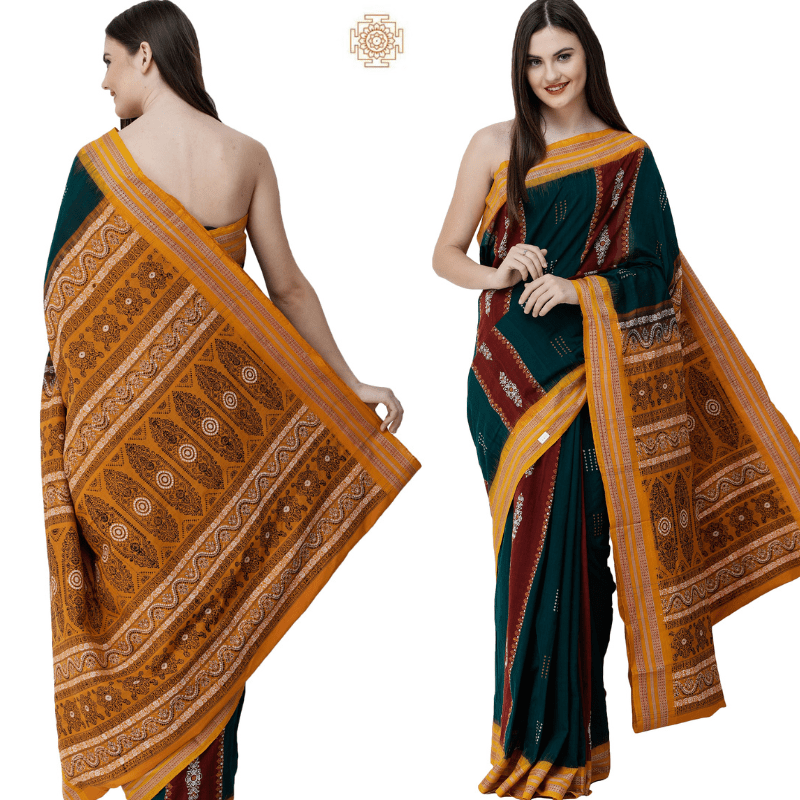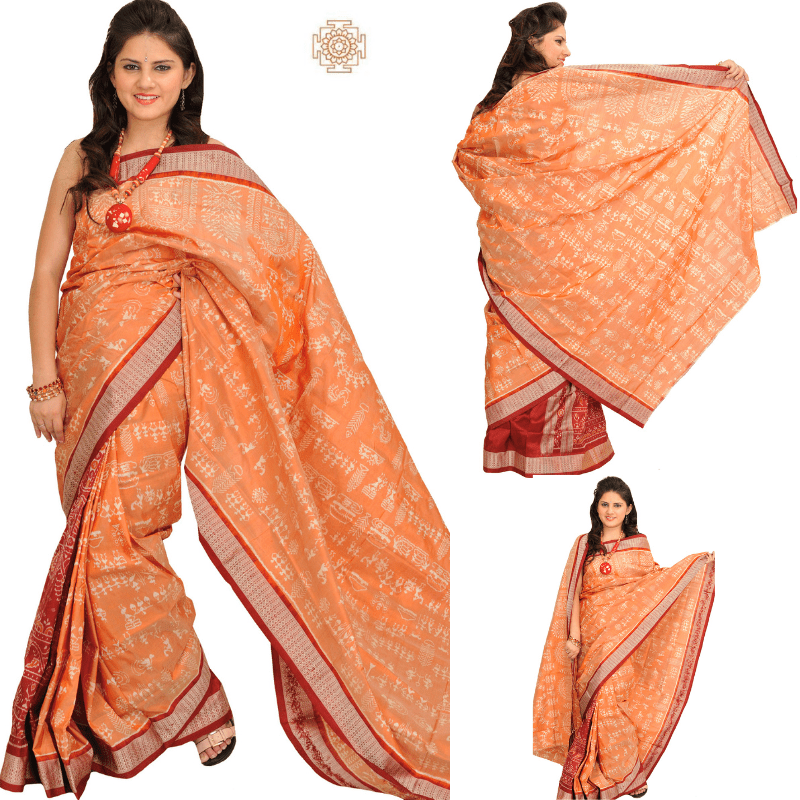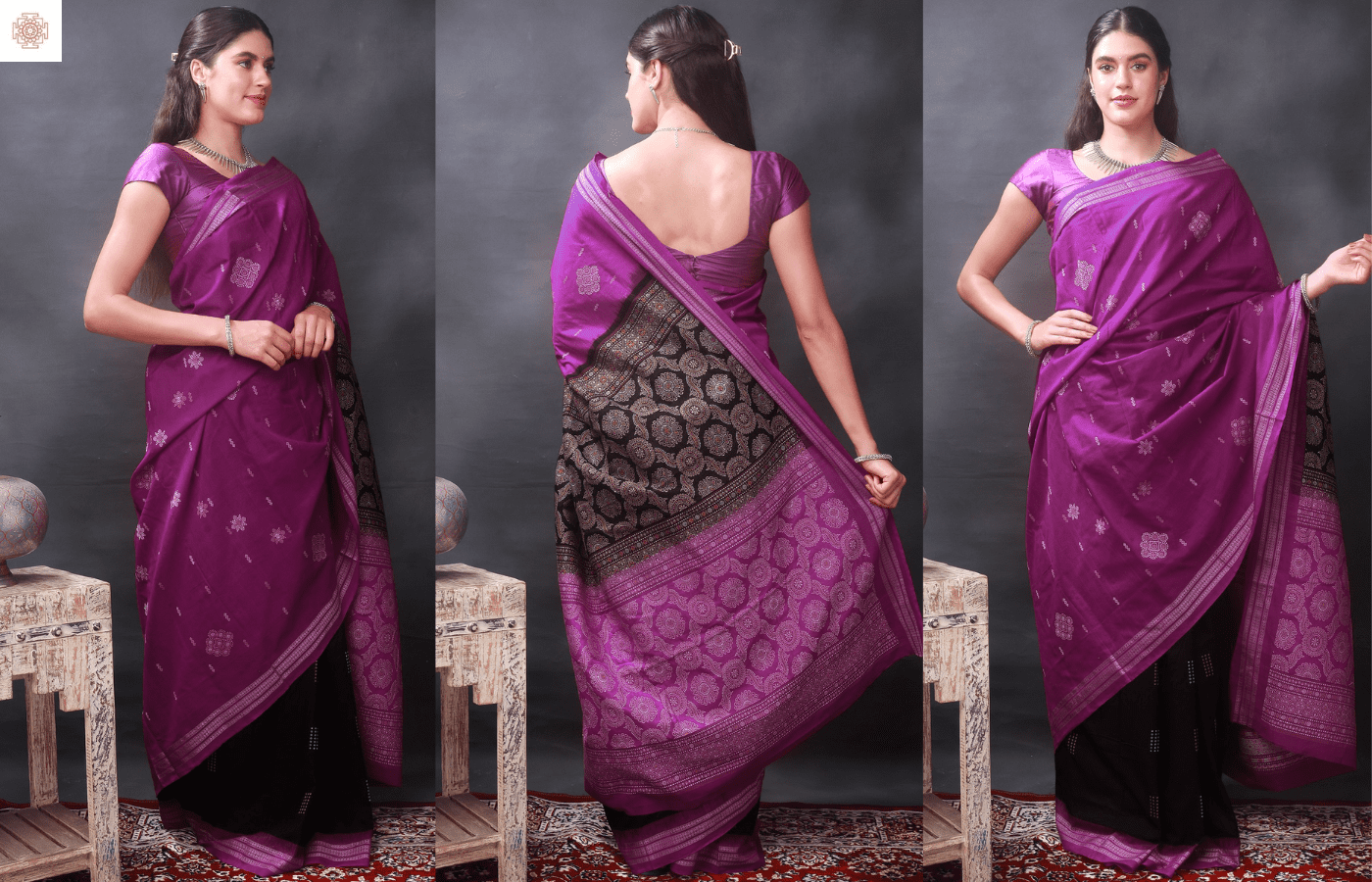Bomkai sarees have a rich history that dates back to the 8th century in Orissa, India. The technique of weaving Bomkai sarees has been passed down through generations, and is believed to have originated in a village called Bomkai in the Ganjam district of Orissa. Initially, Bomkai sarees were made only with cotton yarn and were worn by the locals as a daily wear. However, with the advent of the silk industry in Orissa, Bomkai sarees started being woven with silk yarn as well, giving them a more luxurious look.
Bomkai sarees gained popularity in the 20th century when they were promoted by the Handloom Development Corporation of Orissa. The sarees were showcased in various exhibitions and were well-received by the public, leading to an increase in demand. Today, Bomkai sarees are not only worn by locals but also by people all over India and the world. The intricate thread work and unique motifs on the sarees have made them a popular choice for weddings and other formal events. Despite the popularity, Bomkai sarees continue to be woven using traditional techniques and remain an important part of the Orissa textile industry.
What is the specialty of Bomkai saree?
Bomkai, also known as Sonepuri, is a unique textile that is produced by combining two very popular elements of the Orissa textile industry. This fabric is created using an extra weft technique on a pit loom, and combines the techniques of Ikat and embroidery. The borders of the fabric often feature contrasting colors, while the pallus are decorated with intricate thread work. The motifs on the Bomkai are inspired by nature and tribal art, giving the saree an appealing look that is well-suited for the upper class. Bomkai sarees are available in both cotton and silk materials.

What Fabrics are used in Bomkai saree?
Bomkai sarees are available in both cotton and silk fabrics. The cotton yarn used in the sarees is locally sourced, while the silk yarn is typically sourced from other parts of India. Both cotton and silk yarns are woven on a pit loom using an extra weft technique, which gives the sarees their unique texture and design. The choice of fabric used in a Bomkai saree can vary depending on the occasion and personal preference, with silk sarees being more commonly worn for formal events and cotton sarees being worn for daily wear.
Varieties of Bomkai sarees
There are several varieties of Bomkai sarees, including:
- Pasapalli Bomkai Saree: This type of saree has a checkered pattern in the body and border, with traditional motifs woven in the pallu.
- Bichitrapuri Bomkai Saree: This saree has a unique design, with the borders and pallu featuring different motifs and colors.
- Sonepuri Bomkai Saree: This saree has a simple design, with small motifs woven in the body and borders, and a plain or striped pallu.
- Subarna Patta Bomkai Saree: This saree features a golden thread or zari woven into the border and pallu, giving it a rich and elegant look.
- Bapta Bomkai Saree: This type of saree has a striped design in the body and border, with small motifs woven in the pallu.
Each variety of Bomkai saree has its own unique characteristics and beauty, and they are all highly valued for their intricate designs and skilled craftsmanship.

Themes and Patterns Bomkai sarees
The motifs found in Bomkai sarees are derived from various sources, including nature, mythology, and traditional tribal art. Nature-inspired motifs such as floral and animal motifs are commonly found in Bomkai sarees. The lotus, for example, is a popular floral motif that symbolizes purity and enlightenment in Hinduism, while the peacock motif represents beauty, grace, and spirituality. Similarly, elephant motifs symbolize good luck, prosperity, and strength.
Mythological motifs, such as those depicting Radha-Krishna, Ganesha, and Durga, are often featured in Bomkai sarees. These motifs are inspired by Hindu mythology and are believed to bring good luck and blessings to the wearer. Tribal motifs found in Bomkai sarees are inspired by the rich cultural heritage of Odisha’s tribal communities. The motifs often depict the traditional art and cultural elements of the tribes, and are woven into the saree using vibrant colors and intricate patterns.
- Animal and Bird Motifs: Bomkai sarees often feature motifs of animals and birds such as elephants, peacocks, and parrots. These motifs are typically woven into the pallu and borders of the saree.
- Floral Motifs: Bomkai sarees also feature intricate floral motifs such as lotus, jasmine, and rose. These motifs are often woven into the body and borders of the saree.
- Geometric Designs: Bomkai sarees may also have geometric patterns such as checks, stripes, and squares. These designs are often found in the body and borders of the saree.
- Mythological Motifs: Some Bomkai sarees also feature motifs from Hindu mythology such as Radha-Krishna, Ganesha, and Durga. These motifs are often found in the pallu and borders of the saree.
- Tribal Motifs: Tribal art and motifs are also popular in Bomkai sarees. These motifs are typically woven into the borders and pallu of the saree and often depict the cultural and traditional elements of the tribal community.
Conclusion
Bomkai sarees are not only popular in India but also have gained recognition worldwide, with fashion designers incorporating these sarees in their collections. Today, Bomkai sarees are not just a garment but a cultural symbol of Odisha, representing the rich heritage and craftsmanship of the region.

